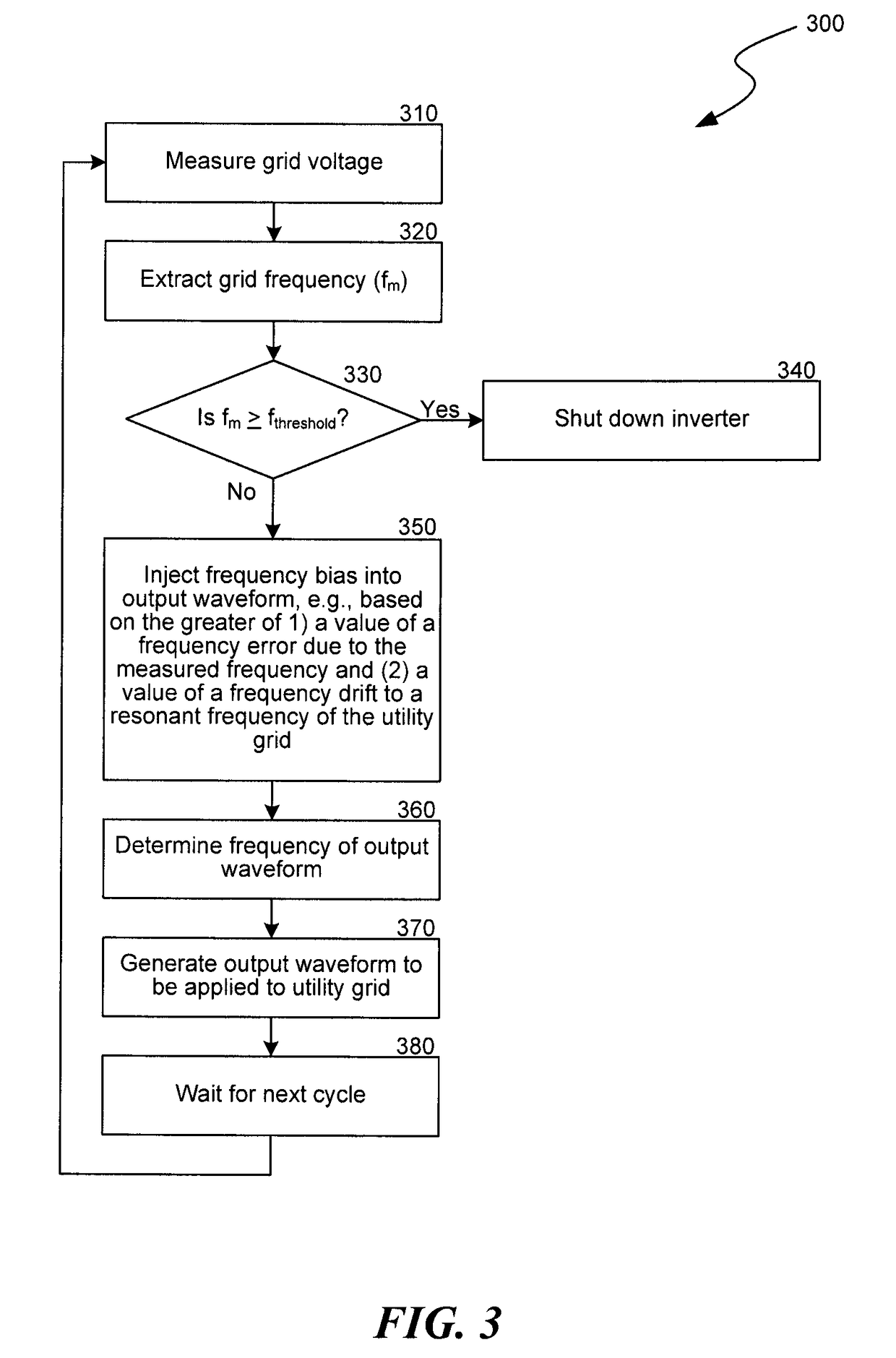System and method for anti-islanding, such as anti-islanding for a grid-connected photovoltaic inverter
- Summary
- Abstract
- Description
- Claims
- Application Information
AI Technical Summary
Problems solved by technology
Method used
Image
Examples
example use cases
UL1741 specifies various islanding testing methods that an inverter should pass before being implemented into a DG system. The islanding tests were performed using UL1741 guided testing configurations, including a utility grid simulation using a power-electronics-based variable AC voltage source (Pacific—50 kW / 62 kVA). For example, during an islanding test, a contactor disconnects the utility and isolates the loads at the location of the inverter. The time required for the inverter to cease energizing its output following loss of utility is then monitored and recorded. The load conditions specified by the standards discussed above included mismatches between inverter output and load. Because the specified degree of mismatch is highly probable, the standards require that the inverter cease to energize very quickly (e.g., within 2 seconds) in order to avoid interference with high-speed re-closing relays. Additionally, additional load conditions specified by the standards include match...
PUM
 Login to View More
Login to View More Abstract
Description
Claims
Application Information
 Login to View More
Login to View More - R&D
- Intellectual Property
- Life Sciences
- Materials
- Tech Scout
- Unparalleled Data Quality
- Higher Quality Content
- 60% Fewer Hallucinations
Browse by: Latest US Patents, China's latest patents, Technical Efficacy Thesaurus, Application Domain, Technology Topic, Popular Technical Reports.
© 2025 PatSnap. All rights reserved.Legal|Privacy policy|Modern Slavery Act Transparency Statement|Sitemap|About US| Contact US: help@patsnap.com



